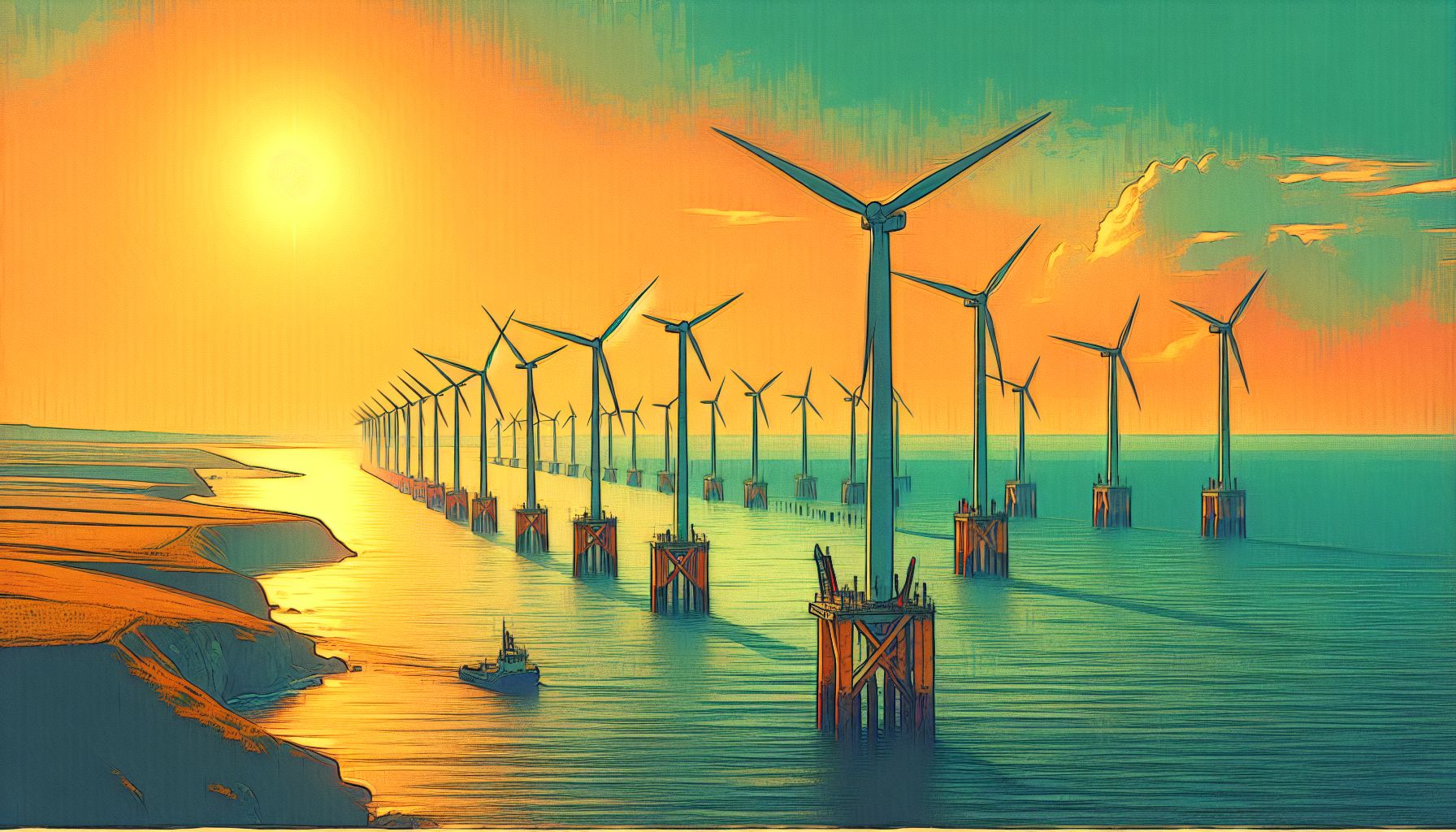Innovations in Offshore Wind Energy Transform Renewable Sector

New turbine designs and construction techniques enable wind farms further offshore, leading to higher energy yields and making offshore wind a key part of the global energy mix.
Technological Advancements in Offshore Wind
Recent advancements in offshore wind power technology have significantly reshaped the renewable energy landscape. Key innovations include larger and more efficient turbines, such as General Electric’s Haliade-X, which boasts capacities of up to 14 MW. This enables higher energy capture and enhances cost competitiveness[1]. Additionally, floating wind turbines, pioneered by companies like Equinor and Principle Power, are revolutionizing the industry by allowing deployment in deeper ocean waters where wind resources are more robust[1].
Notable Projects and Investments
Significant investments and projects are underway to harness the potential of offshore wind energy. For instance, RWE has recently announced the construction of the Nordseecluster A and B off the German North Sea coast. With a combined capacity of 1.6 GW, these wind farms are set to generate approximately 6.5 terawatt hours of electricity annually, contributing substantially to the decarbonization of industries in their home market[2]. The construction of Nordseecluster A, with a capacity of 660 MW, is scheduled to start in 2025, while Nordseecluster B, with a capacity of 900 MW, will begin in 2027[2].
Floating Offshore Wind Farms: A Game Changer
Floating offshore wind farms represent a groundbreaking step in sustainable energy. The world’s first commercial floating offshore wind farm, known as the Pennavel project, is being developed off the Brittany coast by BayWa r.e. and Elicio. This project, expected to have a capacity between 230 MW and 270 MW, will supply power to approximately 450,000 inhabitants annually[3]. Floating structures allow for installations further from land, where wind potential is higher, thus maximizing energy yields and minimizing environmental impact[3].
The Role of Advanced Materials and Construction Techniques
The use of advanced materials and novel construction techniques has further propelled the efficiency and durability of offshore wind structures. Innovations such as composite materials for turbine blades and corrosion-resistant coatings ensure that turbines can withstand harsh marine environments, thereby reducing maintenance costs and extending operational lifespans[1]. Additionally, automated vessels with dynamic positioning systems and swarm robotics are streamlining the installation and maintenance processes, making offshore wind farms more economically viable[1].
Future Prospects and Global Impact
The future of offshore wind energy looks promising, with the sector poised to play a critical role in the global transition to sustainable energy. The European Union, for instance, aims to significantly scale up its clean energy technologies to meet its decarbonization targets by 2050[4]. This includes ambitious plans to increase offshore wind capacity, supported by substantial investments and favorable regulatory frameworks. With continuous innovation and investment, offshore wind power is set to contribute substantially to a cleaner and more sustainable planet[4].

